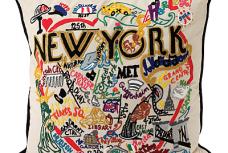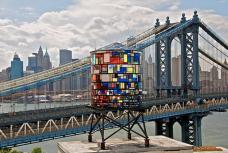
The orange and white-striped vents that let out steam are a...
The orange and white-striped vents that let out steam are a familiar sight in parts of Manhattan. But what do they do exactly?
The New York Steam Company was founded in 1882 and its operations were continued and expanded by Con Edison later. According to Kate Ascher, author of The Works, the steam system “dramatically reduced[d] the amount of soot coming from individual coal-burning furnaces.” One of the most surprising things to us is that steam not only provides heating and hot water, but also powers air conditioning.
The orange and white-striped vents that let out steam are a familiar sight in parts of Manhattan. But what do they do exactly?
The New York Steam Company was founded in 1882 and its operations were continued and expanded by Con Edison later. According to Kate Ascher, author of The Works, the steam system “dramatically reduced[d] the amount of soot coming from individual coal-burning furnaces.” One of the most surprising things to us is that steam not only provides heating and hot water, but also powers air conditioning.
Today, there are seven generating plants which produce the steam that flows at up to 75 miles per hour for over 100 miles under the streets of New York City. About 100,000 business and homes rely on the steam system, including such famous institutions as The Metropolitan Museum of Art, the Empire State Building, and Rockefeller Center. Mundane but more widespread, dry cleaners and hospitals use steam regularly.
There’s also a reason why you see those orange and white steam vents more often in Midtown: the system is most cost-effective where buildings are tallest and people densest. Ascher writes, “it is unlikely that owners of ‘shorter’ buildings [north of 96th Street] could ever use enough steam to justify the cost of extending the mains northward.” The steam you see at street-level is the result of water coming into contact with a steam pipe, and the vents are used to carry the steam above driver level.
















